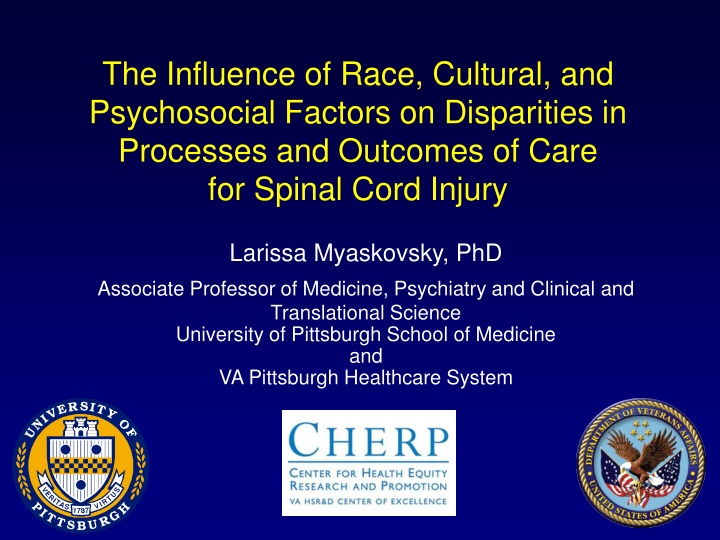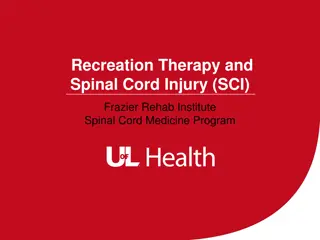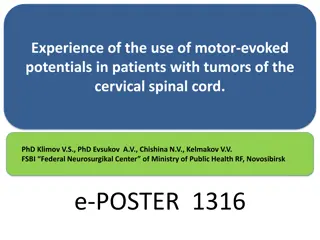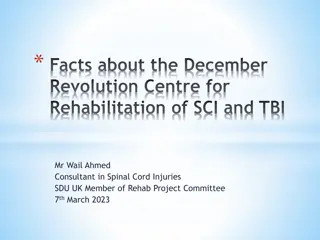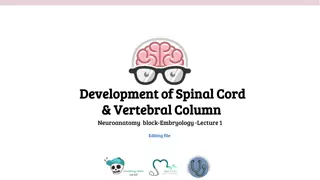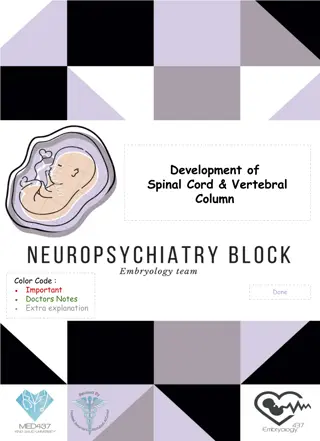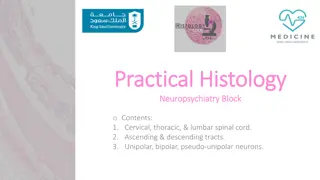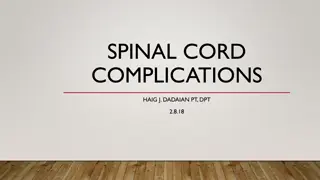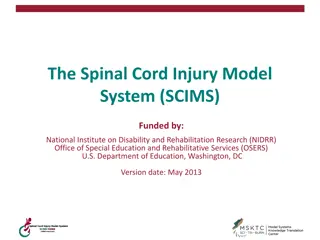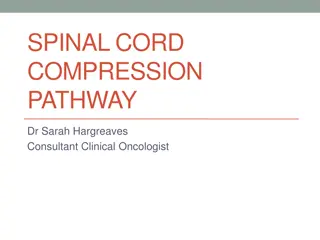Factors Influencing Disparities in Spinal Cord Injury Care
Investigate the impact of race, culture, and psychosocial factors on care outcomes for spinal cord injury. Collaborators, funding sources, and presentation topics are also highlighted, along with a model to advance health equity research.
Download Presentation

Please find below an Image/Link to download the presentation.
The content on the website is provided AS IS for your information and personal use only. It may not be sold, licensed, or shared on other websites without obtaining consent from the author.If you encounter any issues during the download, it is possible that the publisher has removed the file from their server.
You are allowed to download the files provided on this website for personal or commercial use, subject to the condition that they are used lawfully. All files are the property of their respective owners.
The content on the website is provided AS IS for your information and personal use only. It may not be sold, licensed, or shared on other websites without obtaining consent from the author.
E N D
Presentation Transcript
The Influence of Race, Cultural, and Psychosocial Factors on Disparities in Processes and Outcomes of Care for Spinal Cord Injury Larissa Myaskovsky, PhD Associate Professor of Medicine, Psychiatry and Clinical and Translational Science University of Pittsburgh School of Medicine and VA Pittsburgh Healthcare System
Collaborators and Research Team Michael L. Boninger, MD Kelly H. Burkitt, PhD Michael J. Fine, MD Shasha Gao, PhD David Gater, MD Sam Phillips, PhD Ann Spungen, PhD Galen Switzer, PhD Kellee Bornemann Jemy Delikat Devra Greenwald, MPH Jewel Moore Kel Morin Michelle Oyster, MS Debbie Wetzler
Funding Sources Department of Education National Institute of Disability and Rehab Research (NIDRR) VA CHERP Pilot Study Rehabilitation Research and Development Division (VA RR&D)
Presentation Topics A health service research perspective Why are health services researchers interested in Spinal Cord Injury (SCI)? Brief epidemiology of SCI Race and culture in SCI Research findings (hot off the presses!)
Health Services Research Organizational Structures and Processes Financing Systems Health Technologies 1.Access to healthcare 2.Quality and cost of healthcare 3.Health and well-being Social Factors Personal Behavior
CHERP Model to Advance Health Equity Research First Generation Second Generation Third Generation Detecting Define health disparities Define vulnerable populations Measure disparities in vulnerable populations Consider selection effects and confounding factors Understanding Identify determinants of health disparities at the following levels: Patient/individual Provider Clinical encounter Healthcare system Reducing Intervene Evaluate Translate and disseminate Change policy Kilbourne et al, Am J Public Health 2006
Conceptualizing Disparities in Health and Health Care Patient Demographics Biology/Genes Preferences Health Disparities Medical Complications Mortality Functional status Quality of life Healthcare Disparities Processes of care Structure of care Provider Knowledge Attitudes Communication System Accessibility Organization Quality Environment Geography Poverty Segregation Social norms
Why are Health Services Researchers Interested in Spinal Cord Injury? High incidence and prevalence rate 12,000 new cases each year (incidence) Prevalence of SCI in 2013 = 273,000 (range = 238,000 332,000) www.nscisc.uab.edu
Why are Health Services Researchers Interested in Spinal Cord Injury? High incidence and prevalence rate Changing demographics
SCI Demographics Over Time 90 81.8 80.7 80 70 60 50 42.6 40 28.7 24.4 30 20 14.2 10 0 1973-1979 Since 2010 Race (% AA) Age at injury (years) Gender (% male) www.nscisc.uab.edu
Why are Health Services Researchers Interested in Spinal Cord Injury? High incidence and prevalence rate Changing demographics Exemplar of life-long, team-based, patient- focused care
Life-Long Care in Multiple Domains Functional Medical Complications Psychological Community Integration and Employment
Team-Based and Patient-Focused Care
Why are Health Services Researchers Interested in Spinal Cord Injury? High incidence and prevalence rate Changing demographics Exemplar of life-long patient-focused team- based care Multiple under-explored research foci Measurement development Psychological, social, and behavioral predictors of outcomes Disparities in processes of care and patient outcomes
Disparities in SCI Racial and ethnic disparities in health and health-related quality of life (QOL) are well- documented Cultural factors Perceived discrimination and racism Healthcare system distrust Health literacy Communication with provider These factors may be especially critical in SCI care health disparities
Study Goals Identify and compare race differences in cultural and psychosocial factors in Veterans and non- Veterans with SCI Investigate and compare race differences in wheelchair quality and quality of life (QOL): Participation Life satisfaction or satisfaction with service Perceived health status Determine how demographic, medical, cultural and psychosocial factors are associated with racial disparities in wheelchair quality and QOL
Methods Design: Two cross-sectional multi-site studies using structured questionnaires Setting: Six National Spinal Cord Injury Model Systems centers (NSCIMS) and three VA Spinal Cord Injury centers (VA SCI) Eligibility criteria: Age > 16 years SCI with discernable neurological impairments Use a power or manual wheelchair >1 year as primary means of mobility Non-ambulatory except for exercise purposes
Independent Measures Demographics (e.g., race, gender, age) Medical factors (e.g., SCI level) Cultural factors Experience of discrimination Perceived racism Healthcare system distrust Health literacy Communication with provider Psychosocial factors Anxiety Depression
Cultural Factors - Examples Experience of discrimination - Treated with less courtesy than other people because of your race or ethnicity. Perceived racism - Doctors treat people from racial or ethnic minorities the same as white people. Healthcare system distrust - The health care system covers up its mistakes. Communication with provider - Sometimes, my doctors do not listen to me.
Outcomes Wheelchair Quality - VA SCI participants only Craig Handicap Assessment and Reporting Technique Short Form (CHART-SF) - physical independence, cognitive independence, mobility, occupational functioning, social integration Satisfaction with Life Scale - NSCIMS Satisfaction with Service - VA SCI Perceived health status: 2 items from the SF-36 - NSCIMS Veterans SF-12 - VA SCI
Implications for 3rd Generation Research First Generation Second Generation Third Generation Detecting Define health disparities Define vulnerable populations Measure disparities in vulnerable populations Consider selection effects and confounding factors Understanding Identify determinants of health disparities at the following levels: Patient/individual Provider Clinical encounter Healthcare system Reducing Intervene Evaluate Translate and disseminate Change policy
Thank you! Contact information: Larissa Myaskovsky, PhD larissa.myaskovsky@va.gov 412-360-2241
